Best Practices for Scanning QR Codes on Business Cards
Table of Contents []
- Scanning Qr Codes On Business Cards
- Best Practices for Scanning QR Codes on Business Cards: Tips from Plastic Card ID
- Understanding the Importance of QR Code Size
- The Ideal Placement for QR Codes
- Maintaining Contrast for Easy Scanning
- Testing Your QR Codes Before Printing
- The Role of Quiet Zones in QR Codes
- Incorporating Customizations Smartly
- Leveraging Advanced QR Code Features
- Choosing the Right QR Code Generator
- Collaborating with Print Shops
- Benefits of QR Code Business Cards
- Optimize User Experience with Seamless Scanning
- Get Started with Plastic Card ID
Scanning Qr Codes On Business Cards
Best Practices for Scanning QR Codes on Business Cards: Tips from Plastic Card ID
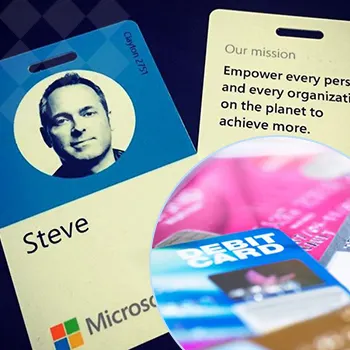
Welcome to a comprehensive guide on ensuring your QR codes on business cards are optimally scannable. At Plastic Card ID, we believe that integrating QR codes can revolutionize how you share information. Yet, not all QR codes are created equal. Let's delve into the best practices to ensure your QR codes are both functional and easily scannable.
Understanding the Importance of QR Code Size
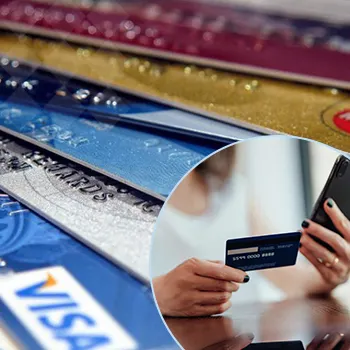
Size matters when it comes to QR codes on business cards. Too small, and the code may be difficult for scanners to read; too large, and it looks cumbersome. Here's what you need to know:
Minimum Size Guidelines
While the dimensions can vary, a safe bet for QR codes on business cards is to keep them at least 1 x 1 inch. This size ensures that most smartphones can easily read the code without any difficulty.
Further, having a sufficient "quiet zone"the space around the QR codeof at least 4 blank modules can significantly improve scan reliability.
Testing the Size
Before printing, always test the QR codes at their intended size to make sure they are scannable. Use various smartphone models to assure compatibility across different devices.
This practice can help you avoid the dreaded "QR Code Not Found" error that can frustrate potential connections.
The Ideal Placement for QR Codes
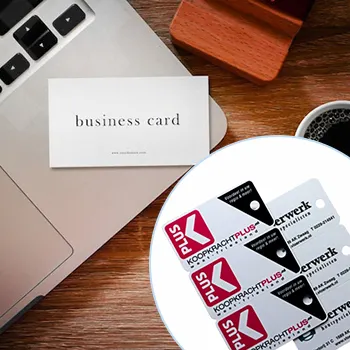
Placement is crucial for QR codes. You want them to be readily visible without overshadowing your business card's primary information. Be strategic:
Center vs. Corner Placement
Placing your QR code in a corner often makes it less invasive and leaves more room for important information. However, having it in the center could catch the eye quicker. Balance is key.
You should avoid placing the QR code too close to the edge as this can lead to scanning issues if part of the code gets cut off.
Consider the Card's Design
Think about how the QR code complements the overall design. It should enhance rather than disrupt the visual appeal. Often, a well-integrated QR code can become a featured element of your design.
Maintaining Contrast for Easy Scanning
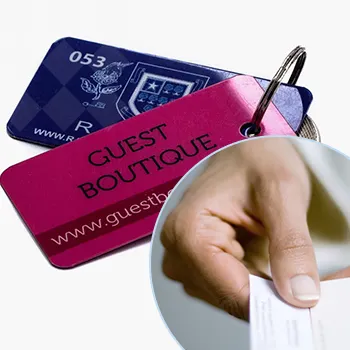
Contrast plays a significant role in QR code readability. Scanners need to differentiate between the dark and light areas to interpret the code accurately. Here's how to nail the contrast:
Color Combinations
Use dark codes on light backgrounds for the best result. Black and white is the traditional and most reliable combination. However, if you want to get creative, ensure high contrast between foreground and background colors.
Avoid colors that blend into each other. For example, yellow on white or blue on black can be problematic.
Material Considerations
The material of your business card also affects contrast. Glossy finishes may cause reflections that hinder scanning. Matte finishes usually offer better readability.
Print samples on the intended card material to check for any unforeseen contrast issues.
Testing Your QR Codes Before Printing
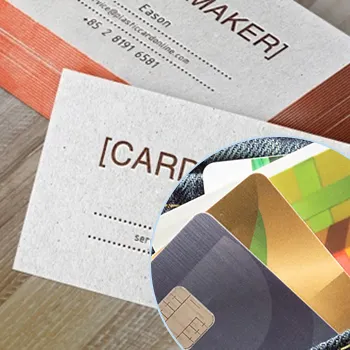
Ensuring your QR codes work correctly before printing is non-negotiable. It's much easier to fix digital mistakes than printed ones. Here's how to go about it:
Use Multiple Devices
Scan the QR code using various smartphones of different makes and models. Sometimes, what works on one phone might not work on another due to varying camera qualities and software.
This step ensures a wider range of compatibility, enhancing user experience.
Test in Different Environments
Scan the QR code under different lighting conditions. Bright, dim, and natural sunlight can affect the scanning process. Ensuring your QR code works across these conditions guarantees better reliability.
Sometimes, even a well-placed QR code can fail if lighting is an issue. Test, adjust, and test again.
The Role of Quiet Zones in QR Codes
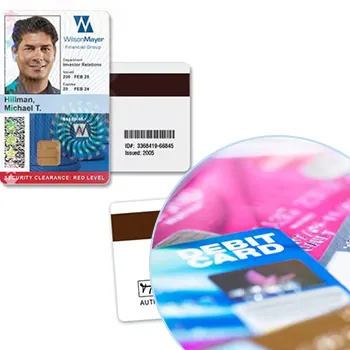
Quiet zonesblank spaces around your QR codeare essential for its readability. They help scanners distinguish the code from other elements. Here's why:
How Much Space is Needed?
An ideal quiet zone is at least four times the width of one module of the QR code. For example, if one module is 1mm, the quiet zone should be at least 4mm wide.
This space acts as a buffer, making integration with other card elements smoother.
Maintaining Cleanliness
Ensure that the quiet zone remains free of any text, images, or designs. Clutter around it can confuse the scanner, making the code hard to read.
Keeping this area clean and clear is one of the simplest yet effective ways to boost scan rates.
Incorporating Customizations Smartly
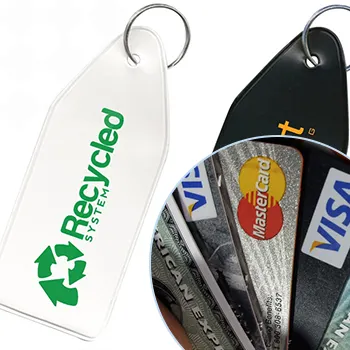
Customizing your QR code can make it more engaging and aligned with your brand. However, too much flair can lead to functionality issues. Here's how to do it right:
Adding Logos
Incorporating logos within the QR code can make it more appealing. Ensure that the logo doesn't cover more than 30% of the QR code. Placing it in the center is usually the best option.
Testing these customized codes is even more critical as added elements can affect scannability.
Stylizing Shapes
Different shapes or rounded edges for the QR code can make it stand out. However, styles should be balanced so the QR code remains functional.
If you opt for custom shapes, extensive testing will help ensure the code is still easily readable.
Leveraging Advanced QR Code Features

Today, QR codes can do much more than just redirect users to a website. They can store contact details, generate emails, and much more. Making use of these features can enhance your business card's value:
vCard Integration
Embedding a vCard in your QR code allows users to save your contact details instantly. This feature can be beneficial for networking.
Include essential information like name, phone number, email, and business title. A quick scan should give them everything they need to contact you.
Call to Action (CTA)
QR codes can also direct users to perform specific actions, such as calling a number or sending an email. This can be especially useful for promotions or testimonials.
Ensure the CTA is clear and inviting, compelling users to engage instantly.
Choosing the Right QR Code Generator

Selecting a reliable QR code generator is crucial. Not all QR code generators are built the same, and this choice can impact the final product. Here's how to choose wisely:
Features to Look For
Look for QR code generators that offer high-resolution download options. This ensures that your QR code remains sharp and clear when printed on business cards.
Other valuable features include analytical tools to track scans and customization options for adding logos and changing colors.
User Reviews
Spend some time reading user reviews. Feedback from other users can give you insights into any issues you might encounter.
Reliable user reviews often highlight pros and cons that you might not have considered initially, guiding you towards a more informed decision.
Collaborating with Print Shops
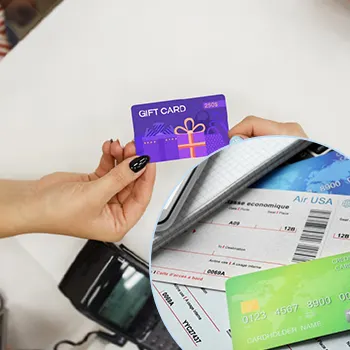
If you're not printing the business cards yourself, collaborating efficiently with print shops is crucial. Effective communication ensures the final product meets your expectations. Here's how:
Share Specifications
Communicate your QR code needs explicitly. Share details about size, placement, material, and any custom elements included in the QR code.
Providing a detailed brief can minimize errors and make sure the print shop delivers exactly what you envision.
Request Proofs
Ask for a digital or physical proof before proceeding with the full print run. Proofs give you a chance to see and test the QR code on the actual business card material.
This step allows for adjustments before finalizing, saving time and money on reprints.
Benefits of QR Code Business Cards
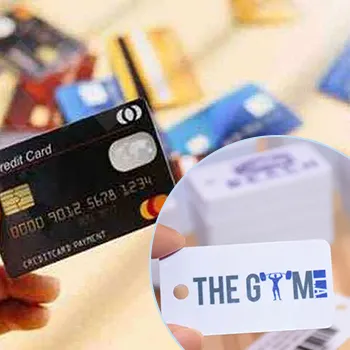
QR code business cards are not just trendy; they are incredibly practical. Here's why integrating them can benefit you and your business:
Enhanced Networking
A quick scan can share your contact details, social media profiles, and even portfolio links. This convenience can make networking more efficient and impactful.
No more typing in long URLs or phone numbers; a single scan can do it all.
Insightful Analytics
Some QR code generators offer analytical features. These insights can help you understand how often and where your QR code is being scanned.
Such data can be valuable for optimizing your networking and marketing strategies.
Optimize User Experience with Seamless Scanning

At Plastic Card ID, we aim to help businesses create QR code business cards that offer a seamless user experience. By following these best practices, you ensure that your cards are not only attractive but also functional and efficient.
Continuous Testing
Regular testing and adjustments are crucial. New phone models and software updates can change how QR codes are read. Stay updated with continuous testing.
This proactive approach helps maintain the reliability of your QR codes over time.
Feedback Loop
Encourage feedback from users who scan your QR code. Understanding their experience can offer insights into areas for improvement.
A seamless user experience keeps your connections happy and engaged.
Get an Instant Quote
Visit PlasticCardID to get started!
Get Started with Plastic Card ID

Ready to elevate your business cards with seamlessly scannable QR codes? Contact us today at 650-300-9340 to get started. At Plastic Card ID, we are committed to providing top-quality printing solutions nationwide. Let us help you make a lasting impression with QR code business cards.
Previous Page


